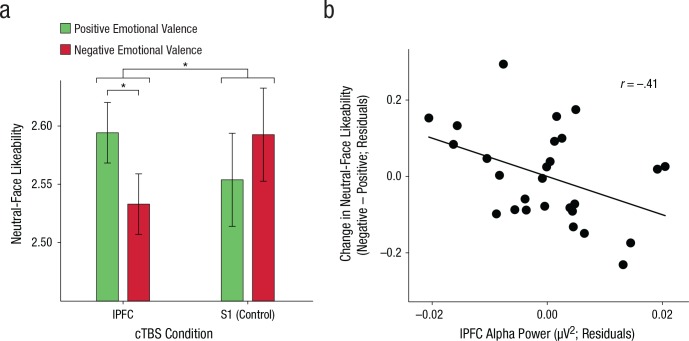Fig. 2.
Impact of inhibition of lateral prefrontal cortex (lPFC) by continuous theta-burst stimulation (cTBS) on evaluative behavior after emotional processing. The bar graph (a) shows neutral-face likeability separately for faces presented after cTBS to the lPFC and S1, following the presentation of positively and negatively valenced emotional expressions. The error bars represent ±1 SEM of the within-subjects difference between valence conditions. The asterisks indicate significant differences (p < .05). The scatterplot (with best-fitting regression line; b) shows the relationship between change in neutral-face likeability after cTBS administration to lPFC and power in the alpha band (controlling for alpha and behavioral responses in the control condition). Power was measured over the electrode (F7) closest to the location of the transcranial magnetic stimulation coil on lPFC. Plotted on both axes are the residuals saved from linear regressions in which responses recorded in the control condition were regressed out of responses in the lPFC condition. Each data point denotes results for a single subject. (For the scalp topography of this correlation, see Fig. S2 in the Supplemental Material.)

